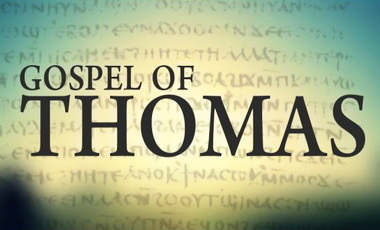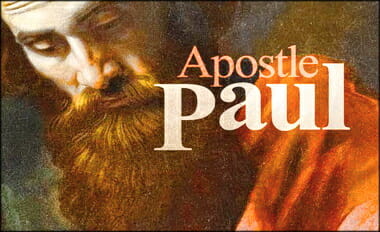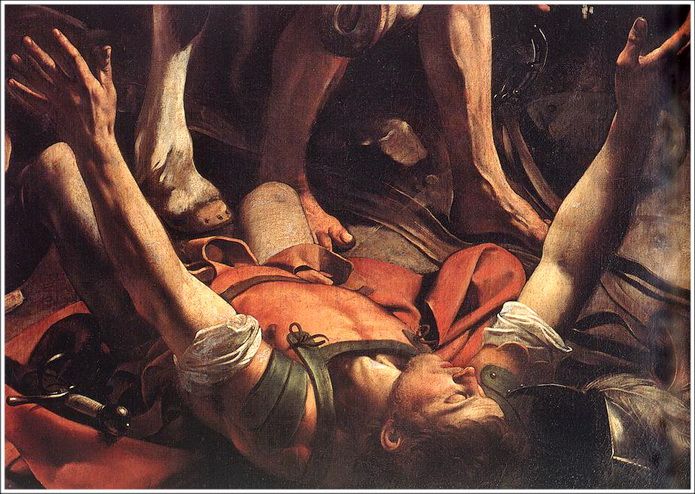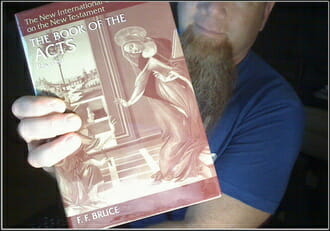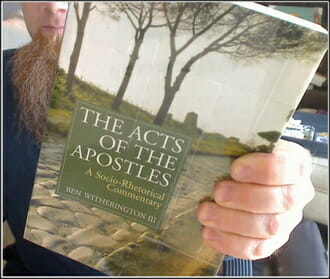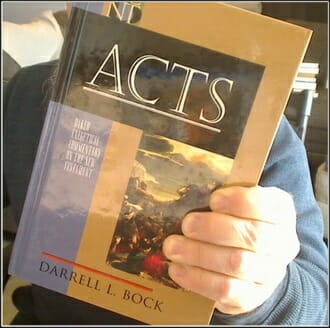The Jesus Seminar places high value on the historical basis of the Gospel of Thomas–that it recovers for us words Jesus actually spoke that are not found in our four Gospels. But many other scholars, conservatives and liberals alike, view this document more cautiously. Most think that it is no more than a second-century collection of sayings loosely based on the canonical Gospels (Matthew, Mark, Luke, and John) and other writings, and that it offers nothing that is original or older.
Craig Evans, Doubting Thomas’ Gospel, Christianity Today, June 15, 1998 Vol. 42, No. 7, Page 53 (Via APOLOGETIS INDEX)
In fact, the Jesus Seminar calls Thomas the “Fifth Gospel”. Lol. This post is being updated due to a book I am reading with some guys from church, the author stated this:
Before the gospels were written, it was easy for heretics to make up stories about the life of Christ. For example, the Book of Thomas includes fictitious stories about Jesus’ childhood, like how He would make sparrows out of clay and levitate kids who were being mean to others.
Ken Ramey, Expository Listening: A Practical Handbook for Hearing and Doing God’s Word (Woodlands, TX: Kress Biblical Resources, 2010), p.74
A couple things, I believe the author may have simply misspoke (miswrote). I do not believe the author thinks the Gospel of Thomas, what he rightly calls the “Book of Thomas,” becuase it IS NOT a Gospel as Christians understand it, predates the canonical Gospels. However, if on the off chance he does [or others do], then this is a perfect time for an update to this post. With everything I have read and watched on the matter dates to probably no earlier than A.D. 180, and is more likely in the form the Jesus Seminar lauds, closer to A.D. 220.
So if you split the difference we are looking at a reasonable A.D. 200
If Ken Ramey meant the “Gospel” of Thomas the Contender, that is even of a later date. Darrell Bock says that is dated early to mid-third century.
But here is the rest of the story.
(Via Inspiring Philosophy) This is an in-depth look into what the gospel of Thomas is and when it was written. Sources:
- Simon Gathercole – The Gospel of Thomas | NT Wright – The New Testament and the People of God | Craig Evans – Fabricating Jesus | John P. Meier – A Marginal Jew | Darrell Bock and Dan Wallace – Dethroning Jesus | Hippolytus of Rome – Refutation of all Heresies | Cyril of Jerusalem – Catechesis Lecture | Richard Bauckham – Jesus and the Eyewitnesses | Nicholas Perrin – Thomas: The Fifth Gospel?
Author and professor Darrell Bock breaks down some of the dating:
- Apocalypse of Peter—mid-second to mid-third century
- Apocryphon of James—late second to early third century
- Apocryphon of John—mid-second to early third century
- Dialogue of the Savior—mid- to late second century
- Eugnostos the Blessed—late first century to second century
- Excerpta ex Theodoto—late second century
- Gospel(s) of Bartholomew—fifth or sixth century
- Gospel of Judas—second century
- Gospel of Mary Magdalene—early to late second century
- Gospel of Peter—mid-second century
- Gospel of Philip—late second to early third century
- Gospel of the Egyptians—second to third century
- Gospel of the Savior—second century
- Gospel of Thomas—late first to early second century
- Gospel of Thomas the Contender—early to mid-third century
- Gospel of Truth—mid-second century
- Hypostasis of the Archons—third century
- Interpretation of Knowledge—mid- to late second century
- Letter to Rheginos ( =Treatise on the Resurrection)—late second century
- Pistis Sophia—second century
- Second Treatise of the Great Seth—late second century
- Sophia of Jesus Christ—second century
- Teachings of Silvanus—mid-third to early fourth century
- Treatise on the Resurrection (Letter to Rheginos)—late second century
- Tripartite Tractate—third to fourth century
- Valentinian Exposition—late second century
Darrell L. Bock, The Missing Gospels: Unearthing the Truth Behind Alternative Christianities (Nashville, TN: Nelson Book, 2006), 218-219.
I think one of the most damning disproof’s of the weight the Jesus Seminar gave to the “Gospel” of Thomas is the dating of the very first mentions of this supposed “gospel”:
When is Thomas explicitly mentioned? Thomas is referred to by Hippolytus in his Refutation of Heresies that we think should be dated around 220 A.D. Origen about ten years later in his Homilies on Luke refers to the Gospel of Thomas. Thomas is not quoted by anyone in the first and second centuries. Contrast this observation, this non-usage, with the citations of, allusions to, and explicit discussion of the four New Testament gospels. Clement, writing at the end of 95, knows the Synoptic Gospel tradition. But I will focus mostly on Papias, who wrote around 110. Papias talks about the four gospels. He knows the Gospel of Mark. For the sake of discussion let us say Mark was written in 70. I actually think it is earlier than that. In any case, Mark is written in 70, and John in about 90, and Matthew and Luke in between. So in this 20-year period of time, we have the four New Testament gospels. And within forty years of Mark, Papias is talking about Mark, or within 20 years of John, Papias is talking about John. Papias doesn’t talk about Thomas. If Thomas was produced in the 70s, how is this omission to be explained? If we accept April DeConick’s reconstruction, and assume a “kernel” of Thomas already as early as the 40s or 50s, how is this to be explained? Papias is very interested in Apostolic tradition. If there is a core of material that is supposed to represent Jesus’ teaching, and it is treasured by a group that rallies around the name of either James or later Thomas, how is this omission to be explained? Now, it’s possible Papias simply didn’t know and it got by him maybe because of the eastern origin and circulation of Thomas. But I have to wonder, how does this continue? Ignatius, writing around 180 and very concerned with gospels and gospel-like writings, doesn’t know of Thomas. Around 150 Justin Martyr harmonizes the three synoptics, not the “four” Synoptics. That is, he doesn’t harmonize Thomas. The author of papyrus Egerton, which I date to the middle of the second century, is, I believe, a harmony. We have Synoptic and Johannine elements combined. I reject the theory that it’s a mid-first century document that in its original form predates the New Testament gospels before their bifurcation into distinctive Johannine and Synoptic streams. So we have another second century harmony. Where’s Thomas? Why hasn’t Thomas material been incorporated into these gospel harmonies? We have Matthew, Mark, Luke, and John harmonized by Tatian, but not Matthew, Mark, Luke, John, and Thomas harmonized by Tatian. And this is what troubles me. I am especially troubled by Irenaeus who at length insists there are only four early, apostolic Gospels, and who mentions the other gospels produced by other groups, including the Gospel of Judas, much talked about in the public press three years ago. Yet Irenaeus doesn’t know of Thomas. How does Thomas stay under the radar for 150 years, from 70, let us say, to 220? Is it possible? Sure, lots of things are possible. It is just hard to explain that.
Craig Evans, Doubting Thomas: Is the Gospel of Thomas an Authentic Witness to Jesus?, Midwestern Journal of Theology 8.1 (Fall 2009): 3-40 [my PDF copy, pages 17-18].
WINTERY KNIGHT continues this line of counter evidence showing that there is too much of a dependence on late materials (he quotes an article found at THEREFORE GOD EXISTS):
First reason, Thomas has literary dependence on TONS of other New Testament books, which favors a date for Thomas AFTER the books it quotes:
The Gospel of Thomas Cites Too Much Of The New Testament. Publishing writings in the first century was nothing like it is today. If you want a copy of something, you take a quill and some papyrus and you just copy it. That is how the books of the New Testament circulated. It was a very slow process. By the early second century, only a few of the books of the New Testament were in full circulation. Christians of that time only had a few of the books of the New Testament to reference. The epistles of Ignatious, written in AD 110, does not even quote half of the New Testament.
But the gospel of Thomas shows familiarity with 15 of the 27 books of the New Testament! Doctor Craig Evans pointed out that he was not aware of any Christian writing which referenced this much of the New Testament prior to AD 150. The Gospel of Thomas simply references far too many books to be dated early. But despite that, the Jesus Seminar attempts to date Thomas between AD 60 and 70.
Further, this gospel not only cites too much New Testament material. It cites the later New Testament material. Mark was not very strong in Greek grammar and etiquette, so when Matthew and Luke quoted Mark, they polished his wording. The gospel of Thomas quotes the polished wording, the later version. In fact, Thomas even has material from the gospel of John – penned in about AD 90. How can a book from AD 60 or 70 quote a book from AD 90? Thomas is not independent of the other gospels, it quotes the later ones and it is not early, it quotes too much of the New Testament to be considered early.
All these resources deal with other counter evidences to an early writing/publication of this “gospel,” however, I am only sharing resources that others an more thoroughly investigate for themselves. James White states simply the two lines of evidence showing a late, “non-fifth ‘gospel'” aspect of Thomas (EQUIP.ORG):
…The large majority of scholars date The Gospel of Thomas to the middle of the second century. The reason is obvious. The religious beliefs and concepts that came into vogue after the New Testament period deeply influenced this work. Strange, esoteric doctrines and beliefs appear throughout Thomas. These teachings are not only directly contradictory to the teachings of the canonical Gospels, but they also point to a date for the production of the work well into the century after Christ. Here is a sampling of interesting statements attributed to Jesus in The Gospel of Thomas:
- “When you see one who was not born of woman, fall on your faces and worship. That one is your Father” (15).
- “If the flesh came into being because of spirit, that is a marvel, but if spirit came into being because of the body, that is a marvel of marvels. Yet I marvel at how this great wealth has come to dwell in this poverty” (29:1–3).
- “Where there are three deities, they are divine. Where there are two or one, I am with that one” (30).
- “Congratulations to those who are alone and chosen, for you will find the [Father’s] domain. For you have come from it, and will return there again….If they say to you, ‘Where have you come from?’ say to them, ‘We have come from the light, from the place where the light came into being by itself, established [itself], and appeared in their image.’ If they say to you, ‘Is it you?’ say, ‘We are its children, and we are the chosen of the living Father.’ If they ask you, ‘What is the evidence of your Father in you?’ say to them, ‘It is motion and rest’” (49–50:1–3).
- “I am the light that is over all things. I am all: from me all came forth, and to me all attained. Split a piece of wood; I am there. Lift up the stone, and you will find me there” (77:1–3).
- “How miserable is the body that depends on a body, and how miserable is the soul that depends on these two” (87).
- “Whoever drinks from my mouth will become like me; I myself shall become that person, and the hidden things will be revealed to him” (108).
- “Damn the flesh that depends on the soul. Damn the soul that depends on the flesh” (112).
The thorough influence of Gnostic concepts is found throughout these passages. Yet, despite this, the Jesus Seminar is willing only to say that Thomas reflects an “incipient gnosticism.” Admitting how thoroughly the work is soaked in Gnostic thought would place Thomas far into the second century and would show to the unbiased observer that the canonical Gospels are far superior to Thomas on any meaningful historical basis.
In addition to the plain influence of a developed Gnostic world view, the Gospel of Thomas also shows deep familiarity with the canonical Gospels, freely drawing from them. These two factors together obviously make Thomas a late and secondary work.
So why has the Jesus Seminar made such an issue of Thomas? The answer goes to the very heart of what the Jesus Seminar is all about: the re-creation of the Christian faith in a mold more pleasing to the leaders of the group (Robert Funk in particular). Funk’s dislike of confessional, historical Christian belief is easily documented in his writings. Dedicating The Five Gospels to Galileo, Thomas Jefferson (“who took scissors and paste to the gospels”), and David Strauss hardly leaves one in doubt of the viewpoint of the editors….
(emphasis added)
In similar fashion to the above information, WINTERY KNIGHT bullet points two reasons to regard Thomas as NOT part of the canonical Gospels:
- it contains gnostic overtones, and that movement started in the 2nd century
- none of the early Church Fathers quote it, but they quote the four gospels and the letters of Paul, etc.
Here again is Inspiring Philosophy dealing with some of the challenges surrounding this work:
And of course the indomitable Norman Geisler shres a bit as well:
The Gospel of Thomas Portrays a Second-Century Gnosticism. The Gospel of Thomas is influenced by the kind of Gnosticism prevalent in the second century. For instance, it puts into the mouth of Jesus these unlikely and demeaning words: “Every woman who will make herself male will enter the Kingdom of Heaven” (cited by Boyd, 118).
[….]
The Canonical Gospels Are More Historically Trustworthy. There are numerous reasons why the New Testament Gospels are more trustworthy than the Gnostic ones. First, the earliest Christians were meticulous in preserving Jesus’ words and deeds. Second, the Gospel writers were close to the eyewitnesses and pursued the facts (Luke 1:1–4). Third, there is good evidence that the Gospel writers were honest reporters […]. Fourth, the overall picture of Jesus presented in the Gospels is the same.
The Basic New Testament Canon Was Formed in the First Century. Contrary to claims of the critics, the basic New Testament canon was formed in the first century. The only books in dispute have no apologetic effect on the argument for the reliability of the historical material used to establish the deity of Christ.
[….]
The Second-Century Fathers Support the Canonical Gospels. The second-century Fathers cited a common body of books. This includes all the crucial books that support the historicity of Christ and his resurrection, namely, the Gospels, Acts, and 1 Corinthians. Clement of Roman (A.D. 95) cited the Gospels (Corinthians, 13, 42, 46). Ignatius (ca. 110–115) cited Luke 24:39 (Smyrnaeans 3). Polycarp (ca. 115) cited all the Synoptic Gospels (Philippians 2:7). The Didache often cites the Synoptic Gospels (1, 3, 8, 9, 15–16). The Epistle of Barnabas (ca. 135) cites Matthew 22:14). Papias (ca. 125–140) in the Oracles speaks of Matthew, Mark (following Peter), and John (last) who wrote Gospels. He says three times that Mark made no errors. What is more, the Fathers considered the Gospels and Paul’s epistles to be on a par with the inspired Old Testament.
Thus the Fathers vouched for the accuracy of the canonical Gospels in the early second century, well before the Gospel of Thomas was even written.
Norman L. Geisler, “Gospel of Thomas,” in Baker Encyclopedia of Christian Apologetics, Baker Reference Library (Grand Rapids, MI: Baker Books, 1999), 297–298.
Since my site is called RELIGIO-POLITIAL TALK, let me delve into a section, or saying of this supposed Jesus, that challenges those who accept it as part of Christianity. Fist, I will excerpt from a chapter in my book the high regard for women by the early church and specifically the Apostle Paul — whom feminist like to paint as “part of the patriarchy.”
Gnosticism vs. Feminism
Another reason that Christianity succeeded over that of the other ideologies of its day is partly due to – I believe – the high regard given to woman as compared to the pagan religions of the day, Gnosticism included. This topic is dealt with in the book How Christianity Changed the World, by Alvin J. Schmidt. His chapter entitled “Women Receive Freedom and Dignity” is very revealing.[1] 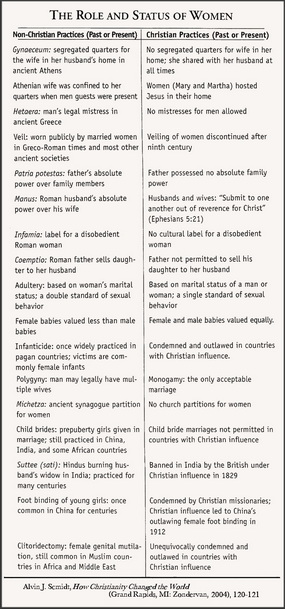
Paul, for instance, had a high regard for women as coworkers, which is amply demonstrated in other letters.[2] Barbara Geller points out that “during the Byzantine era, female leadership was exercised largely within the hierarchical structures of women’s monastic communities.” She continues, however, that,
…the letters of Paul and the Book of Acts suggest that in the earliest phase of emerging Christianity, the opportunities for women were far greater. The closing chapter of Paul’s letter to the church at Rome, following the epistolary conventions of that period, includes greetings and personal commendations. Paul mentions ten women, the first of whom is Phoebe, described in Greek as diakonos and a prostates, correctly translated in the New Revised Standard Version as “deacon” and “benefactor” (Rom 16:1-2). Older translations erroneously rendered these words as “deaconess” and “helper”; thus, generations of translators ignored the plain sense of the text because of their assumption that women could not have exercised significant roles in the early church. Ancient Inscriptions suggest, moreover, that prostates was not only a benefactor or patron, but also frequently the president or head of an association.[3]
As is common, people today with an agenda misinterpret Scripture to bolster a political position or to live comfortably within their own worldview. Paul, in his letters, interprets the role of women more liberally than his antagonists say he does. Even the Gospels portray women as being more spiritually perceptive than men.[4] So it is hardly surprising that early Christianity proved to have a deep appeal for women, as one scholar observes:
“It is probable that Jesus’ teachings attracted women in part because of the new roles and equal status they were granted in the Christian community. There were many cults in Greece and Rome that were for men only, or at best, allowed women to participate in very limited ways [as prostitutes, for instance, in the fertility cults within ‘goddism’]…. Judaism offered women proselytes a circumscribed place at best, for they were faced with the Jewish restrictions that limited participation in religious functions. While women were not allowed to make up the quorum[5] necessary to found a synagogue, nor to receive the Jewish covenant sign (circumcision), these limitations did not exist in the Christian community.”[6]
The Book of Acts is another indicator of the early church’s emphasis on the important role of women. In fact, Peter’s speech to the Pentecost crowd included portions of the Old Testament book of Joel: “And it shall come to pass in the last days, says God, that I will pour out my spirit on all flesh, your sons and your daughters will prophesy…. And on My menservants, I will pour out my Spirit in those days…” (Acts 2:17-18). In the beginnings of this new church founded by Jesus of Nazareth we find women mentioned at the very beginning of Christianity’s historical book, Acts. In 1:14 of Acts we find the disciples were constantly in prayer “along with the women and Mary the mother of Jesus.” The first convert in Philippi, for instance, was Lydia, a dealer in purple cloth (Acts 16:14). The Philippi church meets first in her home (Acts 16:40). Then Priscilla is introduced (18:2), who was a Jewish evangelist! Together with her husband, Aquila, she is mentioned four times in Acts, always being the first mentioned.[7] Likewise, In Romans 16:3 we find Paul mentioning first Priscilla and then her husband, Aquila – mentioning that both are equal in Christ: “Greet Priscilla and Aquila, my fellow workers in Christ Jesus.” In fact, Priscilla is always mentioned prior to her husband except for once, another key to the overturning of patriarchal customs up to that point.[8]
Luke makes mention of when Paul visited the evangelist Philip in Caesarea, that he had four daughters who prophesied. Far from Paul and the church being oppressive to women, this type of universality that included women was a departure from both Jewish norms as well Roman norms. The Romans in fact, could have used this early equalizing as being socially subversive to their social order, in this case to the patriarchy. Likewise, the Jewish leaders who rejected Jesus and the teachings of the early church, including Paul at first, severely restricted the role of women.[9] Paul and the other writers of the New Testament telling men that they should cherish their wives (Ephesians 5), that marriage is a financial partnership (I Timothy 5:8), that the husband is to honor his wife (I Peter 3:7), and that the male should be a part of raising their children within the family unit was essentially unheard of until then. In contradistinction, the Gospel of Thomas “is clearly influenced by the kind of Gnosticism we know was prevalent in the second and third centuries, but not in the first.”[10] For example, we find Jesus of the Gospel of Thomas responding to Peter, let’s read:
- (Saying # 114): Simon Peter said to them, “Let Mary leave us, for women are not worthy of life.” Jesus said, “I myself shall lead her in order to make her male, so that she too may become a living spirit resembling you males. For every woman who will make herself male will enter the kingdom of heaven.”
“This demeaning view of women was common within Gnosticism, but utterly foreign to the historical Jesus.”[11] The fact that the canonical Gospels were written a century or two earlier than those of Gnosticism is at least a good preliminary indication that they could possibly also be more authoritative. O. C. Edwards agrees:
“It is precisely as history that I find her [Pagels] work most unsatisfactory. Nowhere, for instance, does she give the impression that the basic picture of Jesus given in the New Testament gospels did not arise contemporaneously with the Gnostic portrait, but antedated it by at least a century. As historical reconstructions [go,] there is no way that the two can claim equal credentials.”[12]
To ignore the century before Gnosticism started, seems to me, like a tell in poker. That is when the opposing player does something or makes an odd move to show the other players that he or she is bluffing, verbal or not. In this case, the total disregard for pre-Gnostic history and roots is telling.
[1] The following list, “The Role and Status of Women” (Grand Rapids, MI: Zondervan, 2004), 120-121.
[2] Dale & Sandy Larsen, 7 Myths about Christianity (Wheaton, IL: InterVarsity Press, 1998), see chpt. 2, “Christianity Suppresses Women”; also all one has to do is read 1 Corinthinas 7:1-16, here Paul puts the male and female on equal terms and status, unheard of in the ancient pagan world… until that is, the New Testament and the Christian community. In fact, Wayne Grudem makes this new distinction apparent when he points out the role of women in the early church:
Perhaps the best example of a woman well trained in knowledge of the Bible is Priscilla. When Paul went to Corinth, he stayed with Aquila and Priscilla: “because he was of the same trade he stayed with them and worked, for they were tentmakers by trade” (Acts 18:3). Paul stayed a year and six months at Corinth (Acts 18:11), and we may ponder just how much Bible and theology Priscilla would have learned while having the apostle Paul as a house guest and business partner during that time! Then Priscilla and Aquila went with Paul to Ephesus (Acts 18:1819). It was at Ephesus in A.D. 51 that Priscilla and Aquila together “explained” to Apollos “the way of God more accurately” (Acts 18:26). So in A.D. 51 Priscilla knew Scripture well enough to help instruct Apollos. After that, Priscilla probably learned from Paul for another three years while he stayed at Ephesus teaching “the whole counsel of God” (Acts 20:27; compare 1 Cor. 16:19, where Priscilla is called Prisca, and Paul sends greetings to Corinth from Aquila and Prisca and the church that meets “in their house”). By the end of Paul’s three-year stay in Ephesus, Priscilla bad probably received four and a half years of teaching directly from the apostle Paul. No doubt many other women in Ephesus also learned from Paul—and from Priscilla! Aquila and Priscilla went to Rome sometime later (Rom. 16:3, perhaps around A.D. 58), but they returned to Ephesus, for they were in Ephesus again at the end of Paul’s life (in 2 Tim. 4:19, Paul writes to Timothy at Ephesus, “Greet Prisca and Aquila”). Now, 2 Timothy was probably written in A.D. 66 or 67 (Eusebius says that Paul died in A.D. 67), and 1 Timothy a short time before that, perhaps in A.D. 65. In addition, before he wrote 1 Timothy, Paul seems to have been in Ephesus and it seems he had told Timothy to remain there when he left for Macedonia (see 1 Tim. 1:3: “As I urged you when I was going to Macedonia, remain at Ephesus . . .”). Therefore, both because 1 Timothy is near in time to 2 Timothy, and because Paul had recently been in Ephesus to know who was there before he wrote 1 Timothy or 2 Timothy, it seems likely that Aquila and Priscilla were back in Ephesus by the time Paul wrote 1 Timothy, about A.D. 65. This was fourteen years after Priscilla and Aquila had explained the way of God to Apollos in Ephesus.
Evangelical Feminism: A New Path to Liberalism (Wheaton, IL: Crossway Books, 2006), 175-176.
[3] Michael D. Coogan, ed., The Oxford History of the Biblical World (2001 paperback edition; New York, NY: Oxford University Press, 1998), 429-430.
[4] Compare Mark 4:40 and 6:52 to Mark 5:25-30. See also Mark 7:24-30 and 12:41-44.
[5] “The number of members of a group or organization required to be present to transact business legally, usually a majority.” Random House Webster’s Unabridged CD-ROM Dictionary, (1999).
[6] Ben Witherington, Women and the Genesis of Christianity (New York, NY: Cambridge University Press, 1990), 246. For those who are not familiar with the Gospel and assume this to reference female circumcision, it does not. Just a quick perusal of Colossians shows that there is freedom found in Christ (Colossians 2:9-15; 3:11-12, NIV):
For in Christ all the fullness of the Deity lives in bodily form, and you have been given fullness in Christ, who is the head over every power and authority. In him you were also circumcised, in the putting off of the sinful nature, not with a circumcision done by the hands of men but with the circumcision done by Christ, having been buried with him in baptism and raised with him through your faith in the power of God, who raised him from the dead. When you were dead in your sins and in the uncircumcision of your sinful nature, God made you alive with Christ. He forgave us all our sins, having canceled the written code, with its regulations, that was against us and that stood opposed to us; he took it away, nailing it to the cross. And having disarmed the powers and authorities, he made a public spectacle of them, triumphing over them by the cross…. Here there is no Greek or Jew, circumcised or uncircumcised, barbarian, Scythian, slave or free, but Christ is all, and is in all. Therefore, as God’s chosen people, holy and dearly loved, clothe yourselves with compassion, kindness, humility, gentleness and patience.
Circumcision was not a sign of salvation or status. We are set free to love and live for Christ Jesus. Freedom is a wonderful thing, both spiritually and economically, and this is the point, modern-day feminism lacks the understanding for both, as we shall see.
[7] John W. Mauck, Paul on Trial: The Book of Acts as a Defense of Christianity (Nashville, TN: Thomas Nelson, 2001), 56.
[8] Acts 18:2, 18, 19, 26; Romans 16:3; 2 Timothy 4:19.
[9] Mauck, Paul on Trial, 56.
[10] Gregory A. Boyd, Jesus Under Siege (Wheaton, IL: Victor Books, 1995), 118.
[11] Ibid., 118.
[12] O. C. Edwards, “A Surprising View of Gnosticism,” New Review of Books and Religion, May 1980, 27. Quoted in, Gary R. Habermas, The Historical Jesus: Ancient Evidence for the Life of Christ (Joplin, MS: College Press, 1996), 107.
END OF EXCERPT
CARM has a good post of comparison of doctrine from the “Gospel” of Thomas and the Bible. Here is the relevant section:
| TOPIC: View of Women |
GOSPEL OF THOMAS: Strongly anti-feminine (114) |
BIBLE: Pro-feminine (Gospel of Mark). |
What a wonderfukl God we have, and instruction manual He has given us! CROSS EXAMINED has a decent telling of what it mans for a book to be considered to be part of the canon. My own post goes a long way to build the foundation for what should and should not be included in the Bible:
